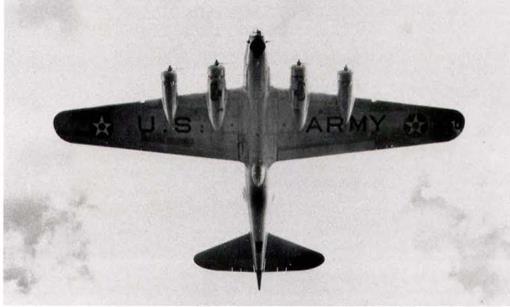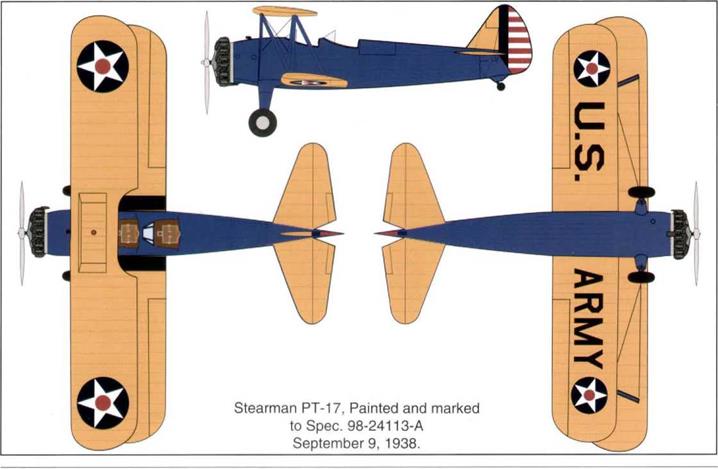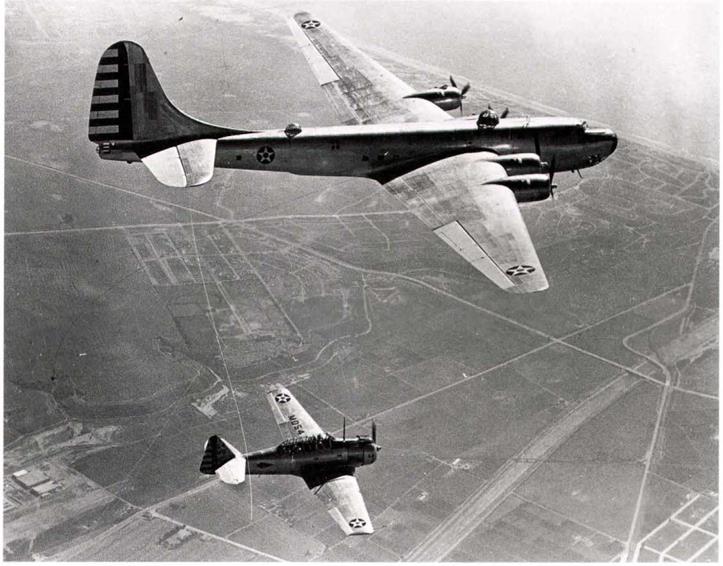Propeller Blades and Hubs to be black, May 1941
Steady progress in the development of new camouflage finishes and requirements inevitably led to continued amendments to Spec. 24114. Unfortunately, Amendment No. 2 has been lost (therefore there is no exact record as to what was said in it). Amendment No. 3 dated May 9, 194І, specified that all propeller blades and hubs should be painted matt black on all surfaces. Paragraph E-5 required that:
All external surfaces of airplane propellers and hubs, after the provisions of Paragraph E-la have been complied with, will be sprayed with one coat of zinc chromate primer, Specification No. 14080. The final finish shall consist of one light coat of cellulose nitrate camouflage lacquer, Specification No. 14105. The color of all external surfaces shall be black in accordance with 14080. The final finish shall consist of one light coat cellulose nitrate camouflage lacquer. Specification No. 14105. The color of all external surfaces shall be black in accordance with Shade No. 44, Bulletin No. 41. After the propeller and hub have been camouflaged and prior to installation, the propeller assembly will be checked for balance.
This was to be the last amendment to Spec. 24114 issued by the Air Corps, later ones being issued by the Army Air Forces.

 |
Boeing B-17B of the 19th BG, March Field, shows the standard “U. S. ARMY” marking under the wing. The two underwing cocardes were replaced by a single one under the right wing in Spec. 24114. (March AFB Museum)
|
|
|
|
Boeing B-17E-BOs, 41-9141 and 41-9131, flying near Seattle are in two different finishes. The nearest one has been repossessed from an RAF batch and is painted in dark green and dark earth over deep sky, with an RAF fin flash, while the other one is in dark olive drab and neutral gray. 512 of this version were built and were considered to he the first real combat-ready B-17. (USAF)
Colors for TVaining Airplanes (Specification 98-24113)
Colors for Advanced, Primary, and Basic trainers were called out in Spec. No. 98-24113-А, dated September 9,1938, and the applicable portions follow (with the colors corrected to the new Army-Navy Porcelain Color Plates of September 1,1938):
|
|
|
Spec. 98-2411Э-А, Color for Army Air Corps airplanes |
||
|
Exterior (Exposed) Surfaces. |
||
|
Primary and Basic Training Airplanes |
Advanced Trainers |
|
|
Ailerons-both surfaces |
Orange Yellow |
Aluminum (1) |
|
Cowling |
True Blue |
Aluminum (1) |
|
Elevator-botb surfaces |
Orange Yellow |
Aluminum (1) |
|
Fins-bolh surfaces |
Orange Yellow |
Aluminum (1) |
|
Flaps-both surfaces |
Orange Yellow |
Aluminum (1) |
|
Fuselage |
True Blue |
Aluminum (1) |
|
Fairing, fuselage-wing |
True Blue |
Aluminum (1) |
|
Horns, fittings, etc. |
Color of surface to which attached |
Aluminum (1) |
|
Rudder, balanced section |
Orange Yellow |
Aluminum (1) |
|
Rudder, aft of rudder post |
Standard rudder insignia |
Standard rudder insignia |
|
Skis |
No added finish |
No added finish |
|
Spinners |
True Blue |
Aluminum fl) |
|
Stabilizers-both surfaces |
Orange Yellow |
Aluminum (1) |
|
Struts-landing gear |
True Blue |
Aluminum Ш |
|
Struts-wing |
True Blue |
Aluminum (1) |
|
Struts-wire braces |
True Blue |
Aluminum (1) |
|
Struls-fairing |
True Blue |
Aluminum (1) |
|
Step-plates |
Black |
Aluminum (1) |
|
Tail Wheel Fork |
True Blue |
Aluminum (1) |
|
Walkways |
Black |
Black |
|
Wings-both surfaces |
Orange Yellow |
Aluminum (1) |
|
Wheel Cowling |
Aluminum |
Aluminum (1) |
|
Highly Reflecting Surfaces i. e. The fuselage decks forward of the pilot’s compartment and the inboard side of engine nacelles. |
Flat Bronze Green (3) |
Flat Bronze Green (3) |
|
Interior (Enclosed) Surfaces |
||
|
Primary and Basic Training Airplanes |
Advanced trainers |
|
|
Wings and Control Surfaces, including ribs, spars, and all interior structures |
Optional |
Optional |
|
Fuselages, excepting compartments for personnel, luggage, and cargo |
Optional |
Optional |
|
Cockpits for pilots and observers which are open or for which sliding enclosures are provided |
Yellow Green (2) |
Yellow Green (2) |
|
Closed cockpits, the top and sides of which form part of the fuselage structure |
Floor and sides to tops of windows: Flat Bronze Green No. 9 (3). Sides above windows and ceilings: aluminum |
Floor and sides to tops of windows: Flat Bronze Green No. 9 (3). Sides above windows and ceilings: aluminum |
|
Seats and upholstering for seats, carpets, drapes, etc. |
Flat Bronze Green No. 9 (3). |
Flat Bronze Green No. 9 (3), |
|
Luggage, cargo and bomber’s compartment |
Yellow Green (2) |
Yellow Green (2) |
NOTES:
(1) Parts and surfaces fabricated from the following aluminum alloys and corrosion resistant steels are used in the natural metal finish without paint coatings, except anti-glare coating:
Aluminum covered Aluminum Alloy, Specification No. 11067.
Aluminum Alloy, Specification No. 11072.
Aluminum Alloy, Specification No. QQ-A-359.
Aluminum, Specification No. 57-151-1.
Corrosion Resistant Steel, Specification No, 11068.
Parts and surfaces manufactured from other metals or fabric shall be finished with aluminum, enamel, lacquer or dope as specified.
(2) Yellow Green is prepared by mixing:
Zinc Chromate Primer, Specification No, 14080 -1 gallon.
Black Enamel, Specification No. 3-98 – 1/10 gallon.
Aluminum Powder, Type B, Specification No. TT-A-476 – 4 ounces,
Toluene, Specification No. 50-11-38 -1 gallon.
(3) Flat Bronze Green is to match color chip No. 9, Color Card Supplement Specification No. 3-1. The lacquer or enamel shall produce a matt appearance of minimum gloss.
|
Douglas XB-19, 38-471, in flight over Santa Monica with an AT-6. It first flew on June 27, 1941, in natural metal finish, and was the largesi aircraft to enter AAF service until the B-36. (Nick Williams) |
These requirements covered primary and basic training airplanes finished in the true blue and orange yellow color scheme, together with advanced trainers finished in aluminum or natural metal finishes. This spec, also covered the interior yellow-green color; this was not matched to any specific color chip, but was prepared by mixing zinc chromate primer, black enamel and aluminum powder, as specified.
Thus, just prior to entry into World War II, the Army Air Forces had no less than three standard trainer aircraft finishes; (1) the orange yellow and true blue scheme; (2) aluminum paint finish; and (3) natural metal finish.













